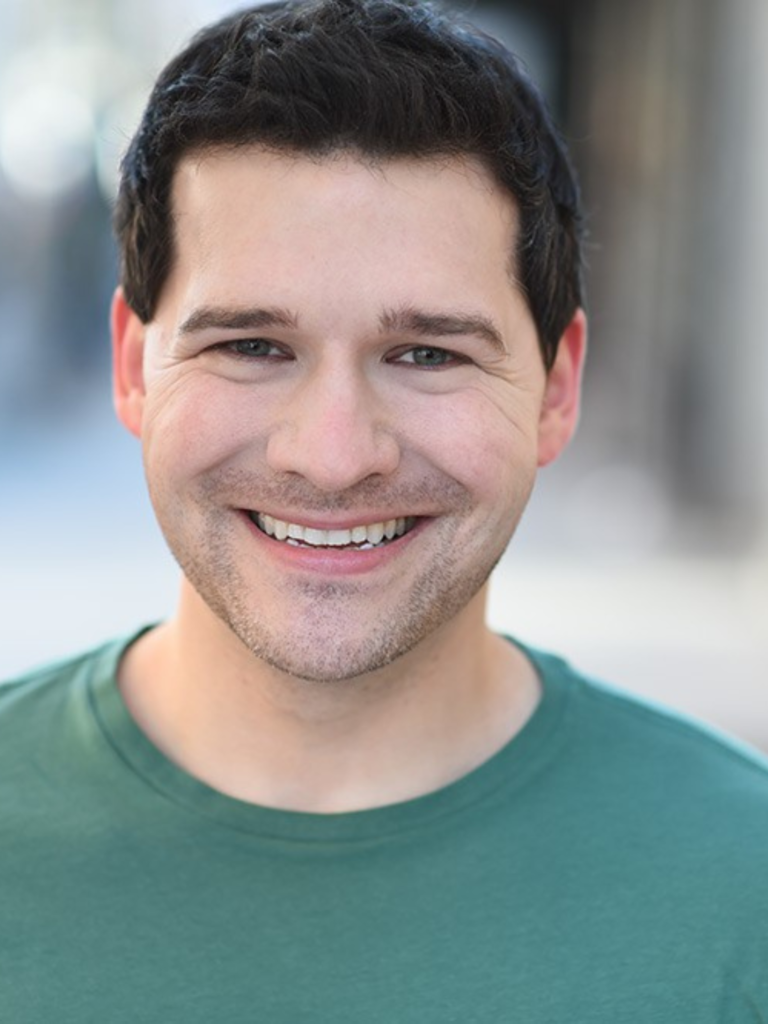Michael Judge Brislin has a clear vision about what helps burgeoning actors to wow the audience on stage.

Supporting learners in developing these key skills is the expertise he brings to his 1-on-1 acting classes on Outschool, as well as his group courses on acting and improv. He has decades of experience as an actor and comedian, plus a history of teaching children, including autistic students and those who are hearing impaired.
We talked to Mike (that’s what his students call him) about fundamental strategies he uses with kids and teens in individual acting lessons, such as:
- Guide learners to connect with their emotions
- Teach young people how to relate to a character
- Act along with students to reduce nervousness and model skills
Read on to get Mike’s take on what makes for standout private acting classes that learners love.
Create a supportive environment for young actors
Help learners tap into their feelings
It’s not necessarily a given that people who are learning to act connect well with their feelings to make their character blossom, Mike says. In his classes, students take the time to examine their feelings—they talk about what makes them happy, sad, and angry.
To do this, Mike encourages students to think of people or experiences—either from their imagination or their life—that make them feel a particular emotion.
“If you can connect with how you feel and put that into the character, suddenly the character comes to life,” he says. When someone with that skill comes on stage, “everyone just suddenly puts their phone down and pays attention… because something real is happening.”

He points out that people often have multiple emotions, so helping learners to identify these layers of emotion improves their acting ability.
In class, “we keep digging down,” Mike says. “Most people feel 5 to 10 emotions at the same time, maybe more, in different amounts.”
Avoid stirring up strong emotions
At the same time, Mike emphasizes that he steers learners away from anything that brings up very powerful emotions. One example is traumatic subjects. It’s important to avoid opening up any old wounds, he says.
“It’s like riding a horse,” Mike says. “If the horse is too wild, it’s going to kick you to the dirt, and you’re going to get hurt.” The emotions that arise have to be ones that a developing actor can control and put away when they’re done. They’re simply tools.
“We want to be able to act in our role, then go about our regular life,” Mike says. Plus, “you’ll be surprised at how a little anger goes a long way.”
One way to get around the chance of opening a Pandora’s box is to ask learners to use their imagination instead of their lived experiences.
Teach students to connect with a character
Mike talks about coaching kids to see how they’re similar to a character. He might tell learners to think about times both they and the character were sad or worried or upset. There’s a lot of character study for even the simplest parts.
“It’s like trying to knit the person and character together,” he says. He might point out: “If you felt like that one time, Desdemona is feeling that way too.”

Mike believes in “the universality of human experience,” that all people go through the same core traumas, joys, and successes.
Sometimes Mike will physically move with a student, so that they both try to put themselves in the body of the character they are focusing on. “I helped a girl get into a play where she’s playing Roxie Hart in ‘Chicago,’ ” Mike says. “How does Roxie walk? Because Roxie is a dancer… so we kind of talk through it as we walk.”
Acting together helps learners to be less nervous, he says. “If I do it with them, then they feel so much less like ‘your teacher’s watching you become a character.’ “
Show students professional acting
Mike also takes opportunities to act in class because it’s fun and it shows learners a way to do it. “I think it’s good for me to act with the students because they should see what it’s supposed to look like when it’s done,” he says.
Seeing him act a role can give learners permission to delve more into their character. It may also answer questions about: “How deep am I supposed to go? Or how silly? Or how happy? Or how angry?”
“If they’re all scared, it can be good for me to be the one to show them, ‘Okay, let’s dive into the deep end,’ “ Mike says, “ ‘and see, I’m okay. You’ll be okay too.’ ”
Ask learners to think about what their character wants
This is a question that Mike asks learners in his private classes: What’s your character’s deepest desire?
“Because once an actor knows who they are, what they want, and how they feel,” he says, “then they know their character very well, and things like improvisation, where you’re trying to make up dialogue, become very easy and the struggle for lines goes away.”
Build your 1-on-1 business with a personalized approach
Make a connection with a learner
Mike calls “winning the kid over” his first goal when someone joins a class. Learners need to feel comfortable and enjoy the process before they can plunge in and open up, he says. Early on, he seeks out what learners love.
“Finding out what they love is the big way in for me,” Mike says, “because they immediately get excited.”

He’ll ask them what their favorite stories are so he can find or create a relevant script. Mike uses a variety of source material from Broadway scripts and commercials to Instagram stories and the Care Bears television series.
Find out learners’ abilities and goals
When Mike gets a new learner, he usually sends them a message asking them about themselves and what they are looking for in acting lessons. He includes questions like:
- Have you performed before?
- What goals do you have?
Recently, he has added a new question: What’s your reading level?
He explained that more younger learners are signing up for his classes and he needs to know they’re reading level for scripts.
Learners may have a variety of reasons they’re taking acting lessons, including to overcome shyness, to learn public speaking, and to prep for auditions.
“I’ve helped kids get into plays and musicals and drama school,” Mike says. “I see what they need, and I bring them to where they need to go next.”
Leave individualized feedback
Mike has often left detailed feedback after each class, maybe even a three-paragraph summary. This communication can let parents know that:
- The class is going well
- You, as the educator, are paying attention to their child
- You know what you are doing
- We’re having fun
- The student is learning
- You see the learner’s strengths and weaknesses
This kind of messaging can also lead to opportunities to ask for class reviews, since this opens the door for further communication.
Invite learners to private lessons
In communicating with learners and families, Mike may also share the possibility of taking 1-on-1 classes. He finds that those most likely to take individual lessons are students who either need the most help or who demonstrate high ability.
“The ones who are either the most dedicated or the ones who struggle the most are often the ones who’ll stick with you the longest,” he says.

Mike adds that he also offers two-person classes if a student would like that option. Then a learner coming from a group class doesn’t “have to jump from six to one,” he says. “They can jump from six to two.”
Balance what you love with what’s popular
Mike has loved Shakespeare for a long time and says he keeps trying to find ways to bring that into his Outschool classes. “I keep trying to package Shakespeare so that people will eat it,” he says. “It’s like the broccoli of subjects.
“It’s really good for you, and if you get a taste for it, you love it. But nobody’s reaching for it, most of the time.”
He has looked at what’s popular on Outschool and saw that improv was a topic learners are seeking. He now teaches improv too. “I’ve kind of learned to mix in the broccoli with the other things,” he says, “that way they don’t notice it at first.”
Bottom line, Mike says, is just experiment with your class offerings on Outschool—class size, pricing, class topics. What’s currently sought after by families can change throughout the year. “You really want to see what clicks,” he says, “and what doesn’t.”
Check out more articles about growing your 1-on-1 following on Outschool:
- Educator stories: Build a 1-on-1 reading class business
- Educator stories: Make your online singing lessons a hit
- Educator stories: Customizing curriculum for 1-on-1 classes
- Educator stories: Make 1-on-1 classes part of your teaching business
- How to start an online tutoring business
- How to attract new learners as an online tutor
- Educator stories: Building a Spanish tutoring business

